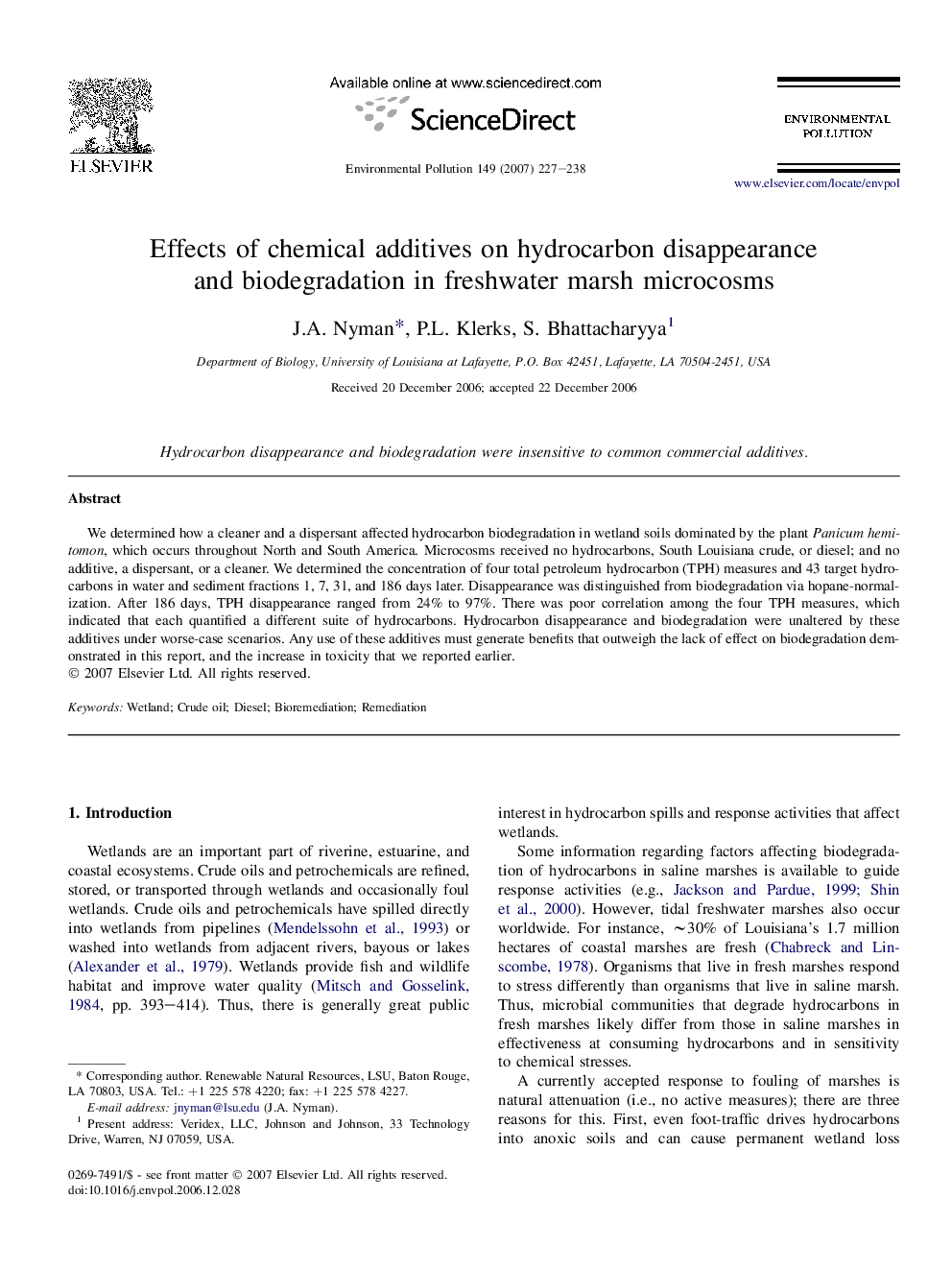| Article ID | Journal | Published Year | Pages | File Type |
|---|---|---|---|---|
| 4427460 | Environmental Pollution | 2007 | 12 Pages |
We determined how a cleaner and a dispersant affected hydrocarbon biodegradation in wetland soils dominated by the plant Panicum hemitomon, which occurs throughout North and South America. Microcosms received no hydrocarbons, South Louisiana crude, or diesel; and no additive, a dispersant, or a cleaner. We determined the concentration of four total petroleum hydrocarbon (TPH) measures and 43 target hydrocarbons in water and sediment fractions 1, 7, 31, and 186 days later. Disappearance was distinguished from biodegradation via hopane-normalization. After 186 days, TPH disappearance ranged from 24% to 97%. There was poor correlation among the four TPH measures, which indicated that each quantified a different suite of hydrocarbons. Hydrocarbon disappearance and biodegradation were unaltered by these additives under worse-case scenarios. Any use of these additives must generate benefits that outweigh the lack of effect on biodegradation demonstrated in this report, and the increase in toxicity that we reported earlier.
